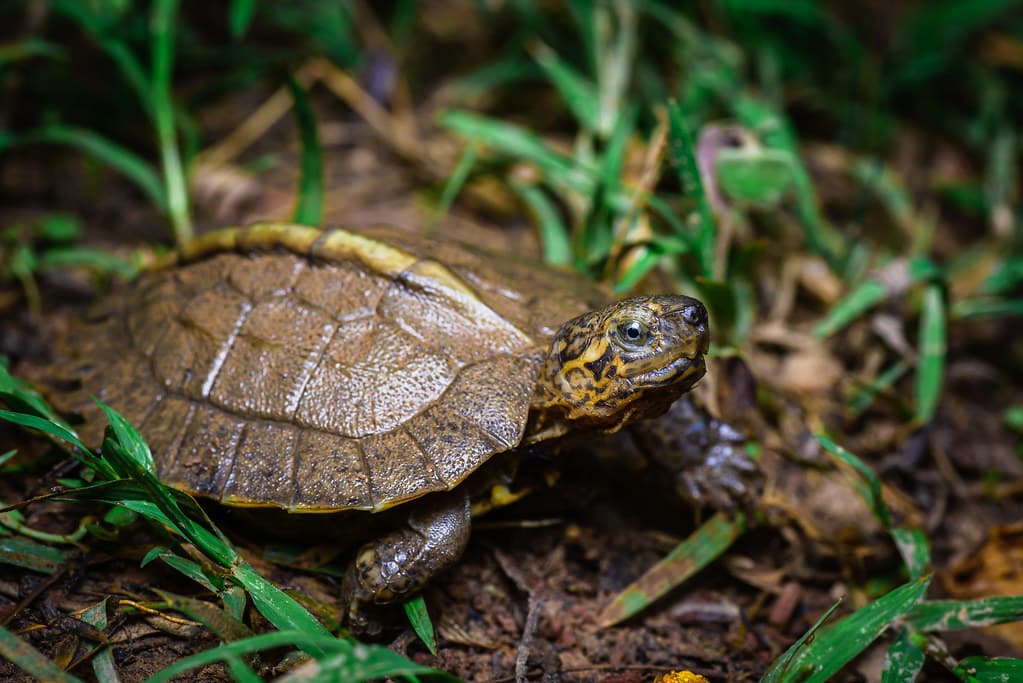It is undeniable that people do eat turtles in Cambodia, and that is not something uncommon. I grew up seeing people eating turtles the same way they eat beef or chicken so I find that normal. Some freshwater turtle species are abundant while others are threatened due to hunting for meat. This is why my concern, and I want to introduce you to 7 freshwater turtle species in Cambodia today.
Asiatic Softshell Turtle (កន្ធាយអាសុី)
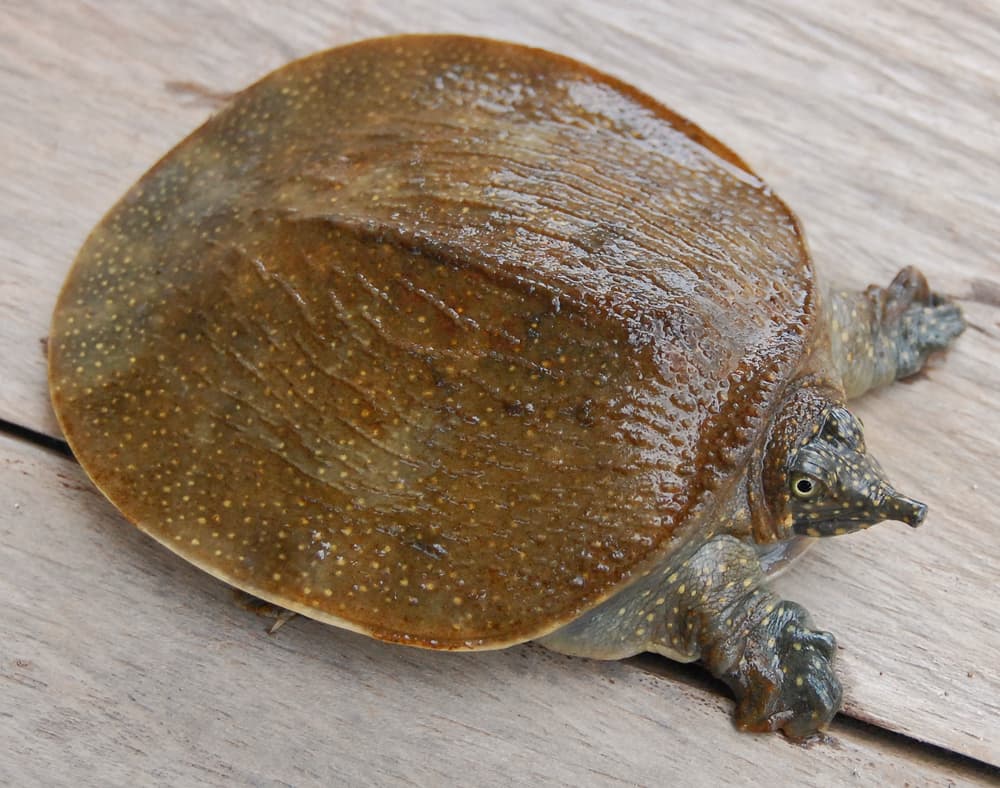
An Asiatic softshell turtle’s shell grows from about 70 to 80 centimeters long, and the shell is leathery and soft. The carapace of adult turtles is oval in shape, and it is soft olive to green-brown in color. As for juveniles, the carapace is dark brown or black and the color gets lighter as it gets older. It has a long thick neck with soft snorkel-like nostrils that help locate prey when hunting. The combination of the neck and nostrils allows them to breathe surface air while the body remains submerged in the substrate.
As a freshwater turtle species, Asiatic softshell turtles live in many locations throughout Asia and Southeast Asia. They inhabit freshwater habitats, rainforest terrestrial biomes, tropical regions, and aquatic biomes of canals, lakes, lowland streams, and ponds. At the same time, they also love wetlands so they also live in marshes, muddy rivers, and swamps as well. Where they live, these omnivores feed on animals and plants such as amphibians, crabs, crustaceans, eggs, fish, insects, and worms. When meat is not available, they will consume berries, nuts, and plant seeds that they find.
Asiatic softshell turtles are one of the turtle species that are in need of conservation and protection in Cambodia. The population of this turtle has been declining every year due to over-exploitation for food and anthropogenic effects on their natural habitats. Across their range in other countries, people also hunt them for consumption as well as trade for local and international food markets. As a result, Asiatic softshell turtles are considered Vulnerable on the IUCN Red List.
Black Marsh Turtle (អណ្តើកក្អែក)
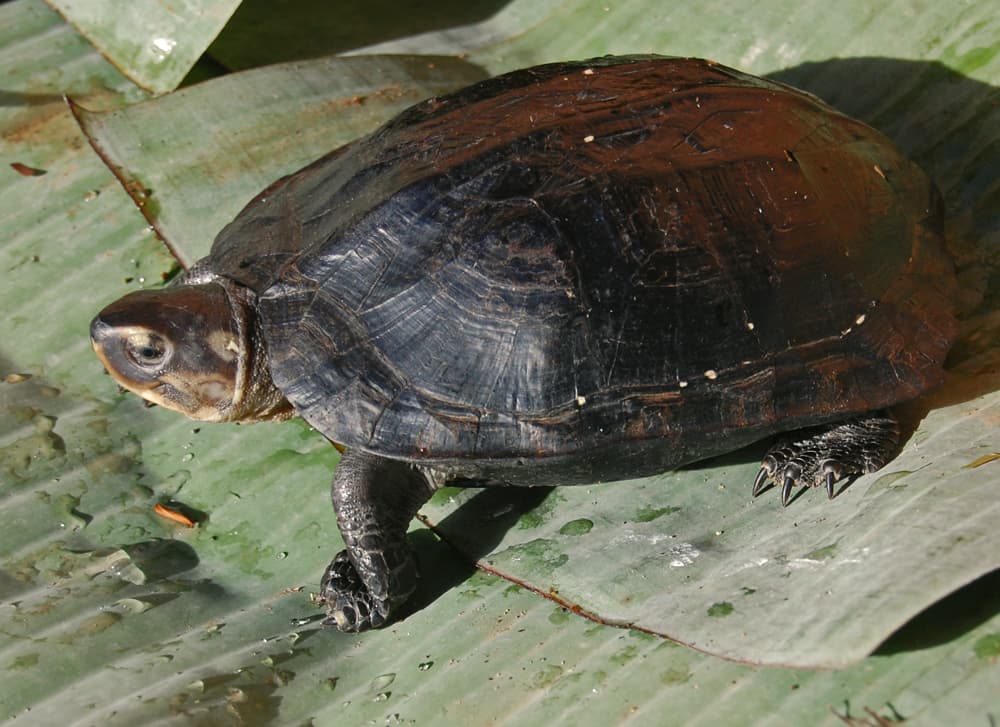
The black marsh turtle is a freshwater turtle species that is endemic to Southeast Asia. It is a small turtle that is almost black in color except for the white to yellow markings on its head. An adult black marsh turtle grows to only around 17 centimeters but there are rare individuals that exceed 20 centimeters. Despite its small size, it has powerful jaws that it uses to crush the shells of its meals. These jaws can inflict wounds when threatened so make sure to not handle them roughly if see one.
These turtles are largely aquatic so they prefer slow-moving or still bodies of water with heavy vegetation. Usually, they hang out in marshes, ponds, and swamps where they like to stay buried in soft mud when not feeding. Speaking of feeding, these carnivorous reptiles like to feed underwater on amphibians, crustaceans, insects, mollusks, small fish, and worms.
Black marsh turtles are considered Endangered on the IUCN Red List due to rapid population declines. They are among other several Southeast Asian turtle species that are heavily exploited for international wildlife trade. People sell them for food and use them in traditional medicine in the Chinese markets. Plus habitat loss, things are not going well for them at all.
Cantor’s Giant Softshell Turtle (កន្ធាយក្បាលកង្កែប)
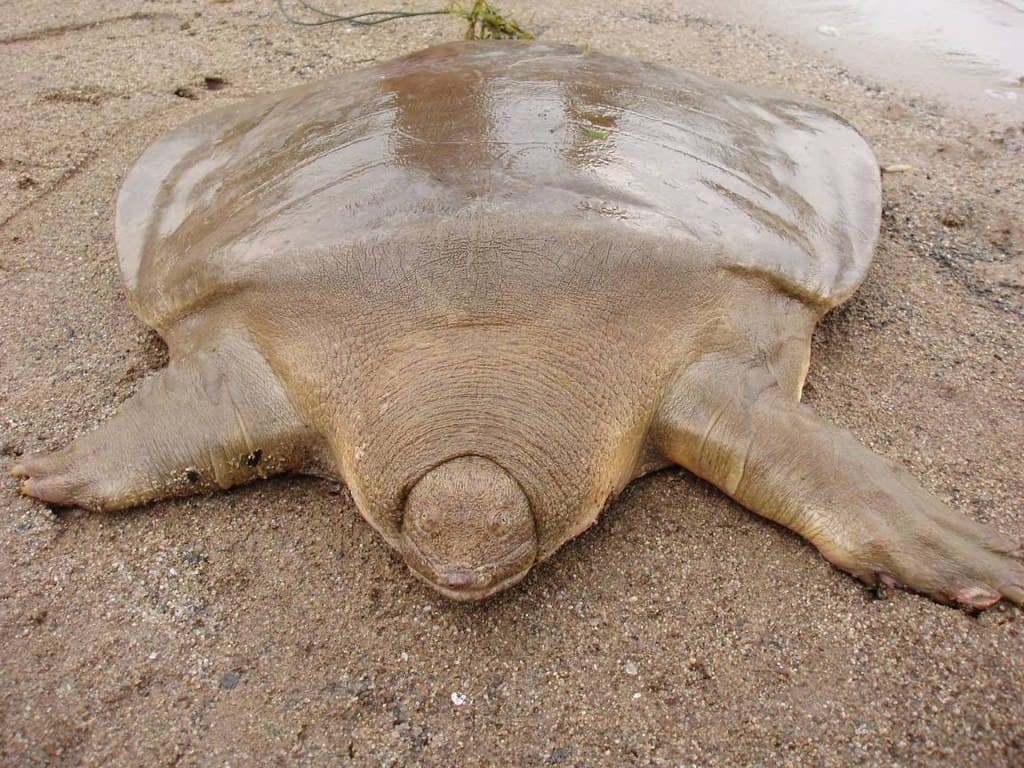
In Khmer language, the name of this turtle literally means frog-headed turtle; similar to its other name frog-faced softshell turtle. Simply because the odd facial features of this turtle resemble a frog’s face. A Cantor’s giant softshell turtle has a broad head with small eyes that are close to the tip of its snout. If you look at the shell, the carapace is smooth and olive in color. The carapace size of the turtle is 70 to 100 centimeters, making them one of the largest freshwater turtle species.
The interesting thing about them is that they are ambush predators that are also primarily carnivorous. So they usually feed on crustaceans, fish, and mollusks along with some aquatic plants on the side. This turtle spends 95% of its life buried and motionless with only its eyes and mouth protruding from the sand. It only surfaces twice a day to take a breath, and that’s pretty much it. Due to their hunting habits, these turtles live in inland and slow-moving freshwater rivers and streams.
Just like other freshwater turtle species, this one is also facing threats that put them in Critically Endangered status. Habitat destruction has forced them to move further and disappear from their range while accidental killing and harvesting by people cause more harm. Even climate changes play a part because it could be too hot or cold which affects their spawning cycle. Despite having distribution in many countries in Southeast Asia, their number declines every year.
Giant Asian Pond Turtle (អណ្តើកសោម)

Giant Asian pond turtles are one of the largest semi-aquatic Asian turtles that have hard shells. Being a large turtle, its brown to black carapace can be up to 48 centimeters long with a unique ridge along the center part. Along with that, it has strong limbs and webbed toes that give it the ability to swim and walk effortlessly.
Not different from other freshwater turtle species, giant Asian pond turtles also live in similar types of habitats. They inhabit marshes, rice paddies, rivers, and streams throughout Cambodia and Vietnam and in parts of Laos, Malaysia, Myanmar, and Thailand. Across their habitats, they feed on meals in both aquatic and terrestrial environments from small animals to carcasses. And just like many turtle species, they also face threats from illegal capture for food, medicine, and pets. Plus with the habitat destruction for land conversion for agriculture, their population is not doing well at all. Nowadays, giant Asian pond turtles are classified as Vulnerable on the IUCN Red List.
Mekong Snail-Eating Turtle (អណ្តើកក្បាលធំ/អណ្តើកស្រែ)
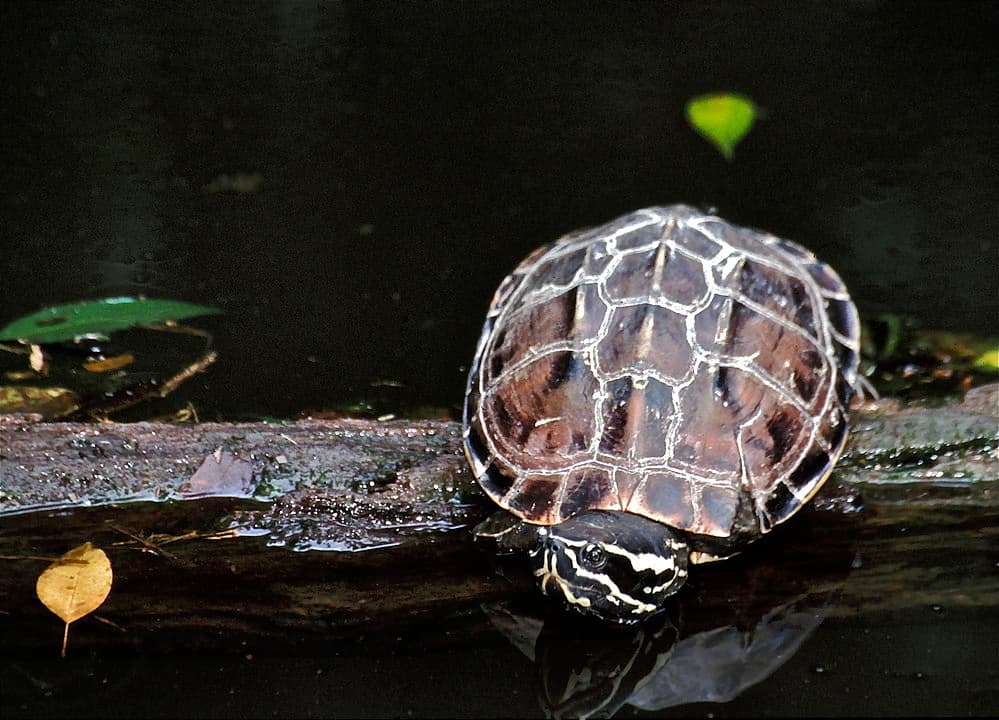
Just like the name suggests, this turtle species is found in the Mekong River basin of Cambodia, Laos, Southern Vietnam, and Thailand. They also live in some parts of Java in Indonesia and the northern Malay Peninsula. Across their range, they live in rice fields, seasonal lowland habitats, and wetlands where food is abundant. Mekong snail-eating turtles are a protected species in Cambodia but illegal hunting for food is still a threat to their population.
Southern River Terrapin (អណ្តើកហ្លួង/អណ្តើកសសៃ)
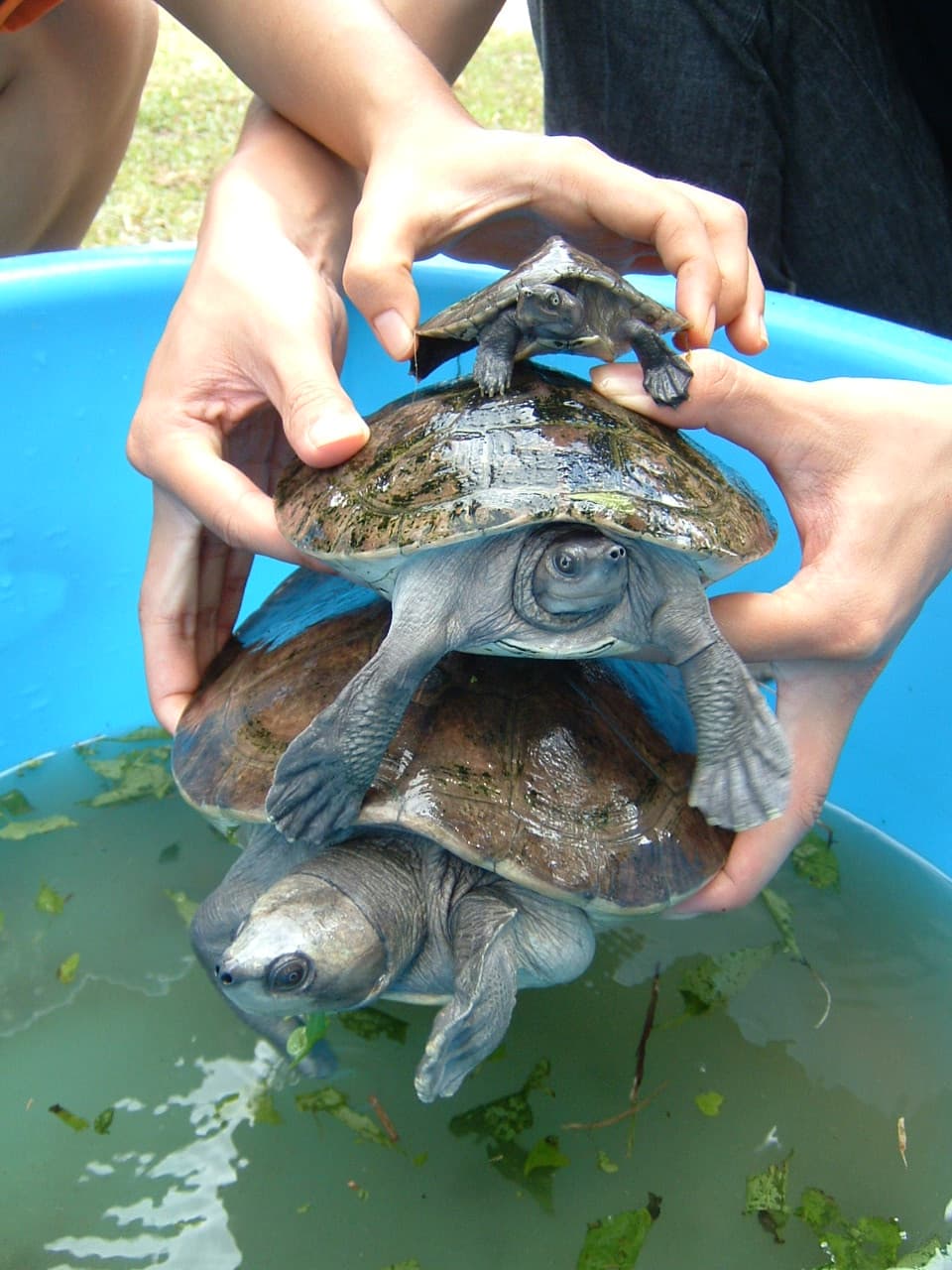
Southern river terrapin aka Royal Turtle is Cambodia’s national animal, and it is one of the rare species in the country. Females and males have different coloration as females remain in a muted state of coloration throughout the year. However, males are gray to black during the breeding season as the pigment melanin is hyper-expressed.
This rare turtle species lives in brackish estuaries, coastal lagoons, inland freshwater rivers, mangrove creeks, and tidal river reaches. These herbivore turtles feed on aquatic vegetation, fruit, and low overhanging riparian vegetation. To protect the species, the late King Norodom Sihanouk declared it as the National Reptile of Cambodia by decree in 2005. Despite the conservation and protection, they are still facing threats from habitat alteration, conversion, and destruction. Collection of adults and eggs for consumption and incidental capture in fishing gear are also major reasons that affect their population.
Yellow-Headed Temple Turtle (អណ្តើកសង្កល់)
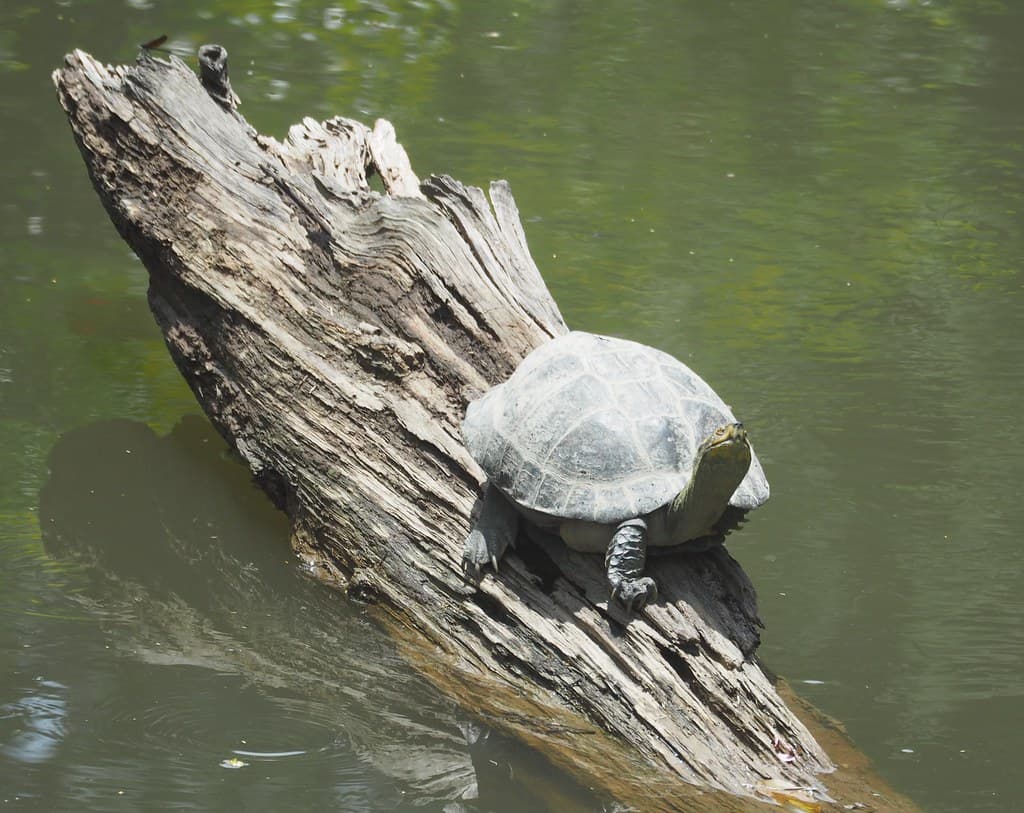
Being a medium-sized freshwater turtle species, yellow-headed temple turtles grow to around 51 centimeters in straight carapace length. It gets its name from the distinct yellow bands on its head and the custom of releasing their kind near Buddhist temples. The distribution of these turtles is across Cambodia, Laos, Malaysia, Thailand, and Vietnam where they live in freshwater wetlands and wet forests. They are also found in brackish water, flooded fields, slow-flowing rivers, and swamps as well. As long as there are fruits, insects, vegetables, and worms for them to feed on, they will happily live there. Apart from being threatened by habitat destruction and hunting, they are also susceptible to ectoparasites, Siam shield leeches.
Related Post: Terrestrial Tortoise Species In Cambodia
